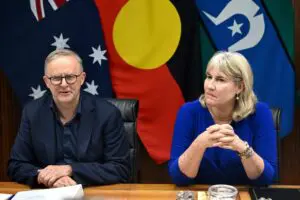While federal climate and energy policy continues its decade long malaise, the latest update report from Green Energy Markets has found that while the states continue to do the heavy lifting on clean energy, some of Australia’s largest states are tracking significantly behind their own renewables targets.
With the federal government confirming at a round of UN climate talks in Bonn that it has no intention of introducing any new measures to reduce emissions, Green Energy Markets has reviewed the progress the states are making on meeting their renewable energy targets, which have been a lifeline to the large-scale solar and wind sectors.
In the May edition of its Renewable Energy Index, Green Energy Markets has found that only half of the states are keeping pace with their renewables ambitions, with both New South Wales and Queensland tracking well behind their respective commitments to renewable energy uptake.
South Australia, Tasmania and Victoria were identified as the states on track to meet their renewables targets.
Victoria and South Australia have led the pack, taking advantage of each of their relative advantages with high-quality wind resources, but both states have also shown growing contributions from small to medium-sized rooftop solar systems.
South Australia saw 53 per cent of its electricity generated from renewable sources in 2018 and is projected to reach 73.5 per cent in 2030. The addition of an extra 1,300MW of renewable capacity would see the State succeed in generating 100% of its power from renewable sources.
Tasmania has been near 100 per cent renewables for some time, producing the vast majority of its power from hydroelectricity.
While New South Wales doesn’t have a specific target for an amount of generation in the state that should come from renewable energy sources, it has set itself the goal of achieving zero net emissions by 2050.
While this is arguably the most ambitious target of all of the states, Green Energy Markets estimates that to be on track to reach that goal, NSW would need to be producing 46 per cent of its power from renewable sources by 2030.
Currently, NSW is well behind this goal and is projected to produce just 28 per cent of electricity from renewables, needing another 5,000MW of renewable capacity to be on track.
Queensland is likewise short of its 50 per cent by 2030 renewables target, needing another 4,500MW of projects to stay on track. The state announced little by way of additional support for renewables in this year’s state budget, but the government did deliver on its promise to make $250 million in funds available for CleanCo, to support the development of new, state-owned, generation projects.
But it is not all bad news for renewables in these States, with NSW leading the pack for renewable capacity currently under construction. More than 3,700MW of new capacity is now under construction in NSW, beating out Victoria (2,954MW) and Queensland (1,457MW).

More than half of NSW’s new capacity will come via the expansion of the Snowy Hydro scheme, which will add 2,000MW of hydroelectric capacity.
Remaining construction activity is split roughly 60-40 between wind and solar projects, with a total of over 9,750MW of new projects under construction.
A similar split is seen in employment figures, with just over half of Australia’s large-scale renewable energy workforce being engaged in the wind industry, and just over one-third working in large-scale solar construction and operation.

Victoria leads the country in employment, with over 9,600 people employed across the large and small scale renewables sectors. NSW followed with around 9,100 employed persons and Queensland with 5,756.
Green Energy Markets found that the recovery in investment in Australian renewable energy projects was leading to new job creation. Across Australia, large-scale renewable energy projects were supporting the employment of almost 22,000 people, with an additional 8,580 people employed in the rooftop solar market.
Green Energy Markets estimates the job creation potential of the state’s targets is significant, with up to 32,000 job-years created if all the states met their stated targets.
In May, Australia sourced 22.3% of its electricity from renewable sources, continuing a trend that Australia has well and truly achieved its national 20% by 2020 renewable energy target. But there is little by way of Federal energy policy beyond 2020 to further support renewables uptake, hence the shift in focus to State policy.

With the federal government showing no intention of extending any form of renewables target beyond 2020, it will likely be state sovernment policy that will drive future investment in renewables.
This is despite federal energy minister Angus Taylor recently lamenting that very fact.










